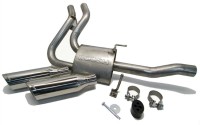What Is the Ideal Material for Plant Pots?
Appealing, functional and trendy. These are the words that can best describe the modern design, but no home of this kind would be complete without the finishing decorative. And, some of them are modern plant pots, without a doubt.
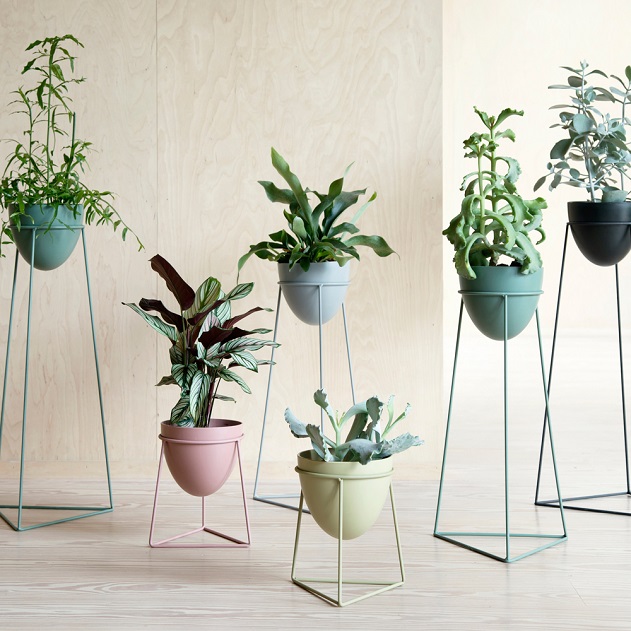
Regardless of the colour scheme of your interior design, adding some refreshing greenery is always a good idea. Plants will not only purify the indoor air from carbon dioxide, but they will also add a breath of life to it. Assuming that you will also choose modern pots for your plants, the right combination of plants and pots can certainly turn your home from drab to fab.
Speaking of modern flower pots, besides making sure the look matches your interior, you should also choose a material that is both durable and beneficial for your plants. Otherwise, you might make your plants susceptible to disease and damage and be unable to keep them alive.
Handmade Ceramic Pots
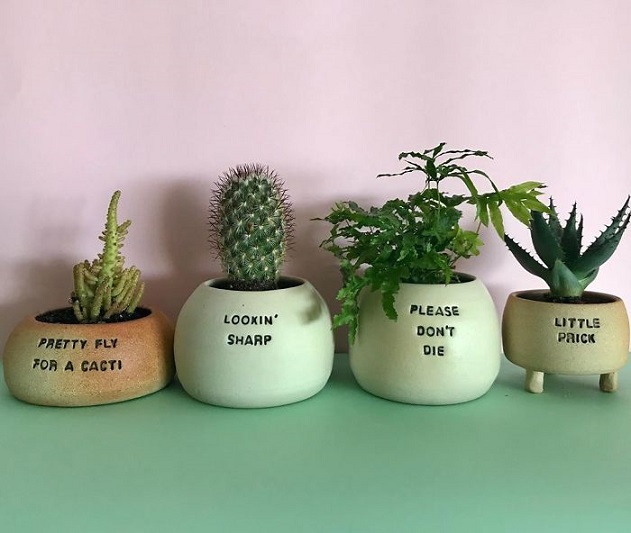
Ceramic planters or also called stoneware are made of finely textured and light-coloured clay which afterwards is glazed to give it a smooth and attractive finish. They’ve been found to be suitable for the growth of a variety of plants since they have a porous surface that allows for good drainage and access to air.
Although nowadays the mass-produced ceramic containers are more present on the market, it is the handmade pots that can give your home a unique touch. Fired at a high kiln temperature in order to reduce the pot’s porousness and vulnerability, these custom-made, high-quality and breathtaking modern plant pots are perfect for indoor and outdoor use. Available in a variety of shapes, designs, colours and finishes, these pots can certainly transform the look of your home, adding a never-seen-before glamour.
The main downside of these planters is that they can easily break if you drop them and they can be quite heavy as well. So, be careful how you handle them.
Terracotta Pots
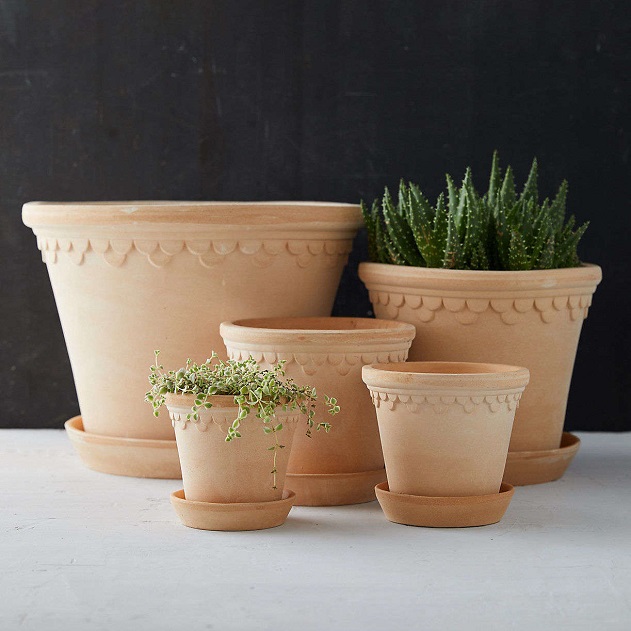
Similar to ceramic, terracotta planters are functional and beautiful, and they are considered the unglazed and less appealing version of ceramic/stoneware planters. Just like ceramic pots, terracotta can also provide healthy root growth. The beauty of these planters is that their quality can range from the poorest to the highest, however, when compared to ceramic, they will always be the second choice when it comes to quality.
Although extremely appealing, terracotta planters are very heavy, especially when they are filled with soil. They are also very brittle and quite easy to break. Unlike ceramic planters which are glazed both on the inside and outside, terracotta planters are not lined or sealed, which makes them even more porous than ceramic pots. Consequently, they are unable to retain moisture for a longer time which is not beneficial for the plants and can cause fungal diseases.
Wooden Pots
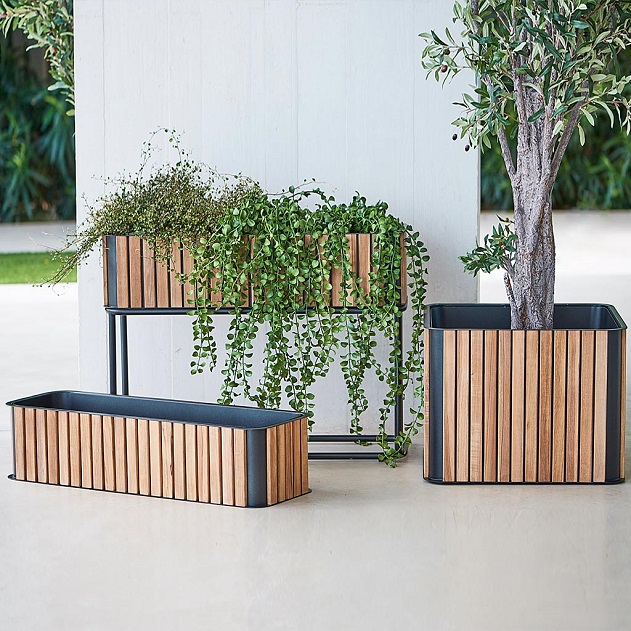
Wood is the most common choice of material for the production of a variety of things and has been used since ever in the construction industry. After all, it’s one of the most reliable, durable and quality materials. In addition, wood is a material that can be used for creating stylish, modern and appealing planters.
Since both the styles and sizes of wooden planters can range, this gives you the opportunity to also choose a custom-made container in order to meet your home needs. When carefully made and maintained, wood planters can serve you for many years to come, and out of all wood types, cedar redwoods and teak are the most durable and long-lasting options for this purpose.
The main downside of wood is that it requires frequent resealing in order to prolong its life and prevent parasite infestations. You should also remove the soil if not using the pot for quite some time, as this is the easiest way to prevent decay.
Metal Pots
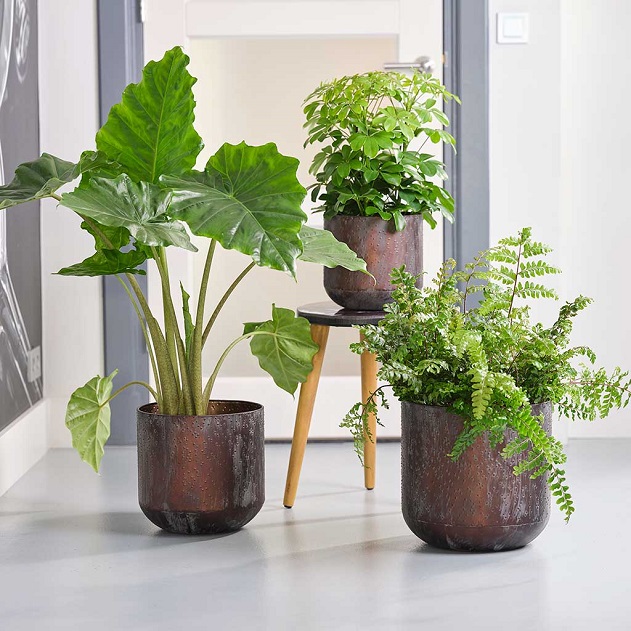
Just like the aforementioned types of materials, metal pots can also range in size, shape, thickness and design. Painted, brushed or shiny, you can also choose from the various metal pots finishes, giving you the opportunity to choose the one that can best meet your home décor and style. Although not the most common choice, it seems that metal pots are able to create a unique look in both indoor and outdoor spaces. And the best thing about them is that they can develop a wonderful worn patina.
The main downside of metal planters is that they can corrode and lust over time, but the truth is that this won’t happen immediately, especially if the chosen ones are pre=coated with a protective finish. Make sure not to expose them directly to the sun since metal can get really hot and might burn your plants. Additionally, this means that the soil will get dry easily, which on the other hand means frequent watering.
Plastic Pots
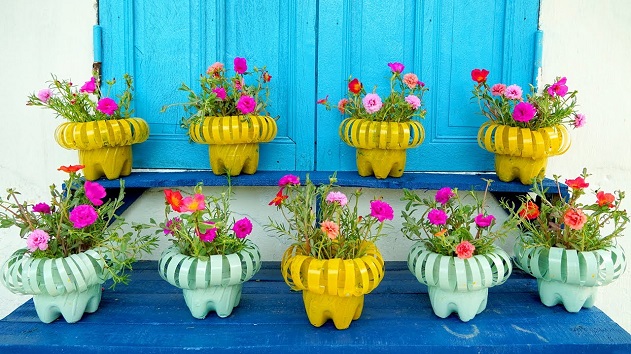
The last but not least type of material is plastic. Uniquely diverse and functional, plastic allows for the production of extremely appealing types of planters. Lightweight, affordable and resilient to damage, over the years, these plant containers became quite popular. However, their main downside is that when placed in the sun, they can fade and crack over time. These planters are also not the perfect choice for growing edibles since they can leach chemicals into the soil.


